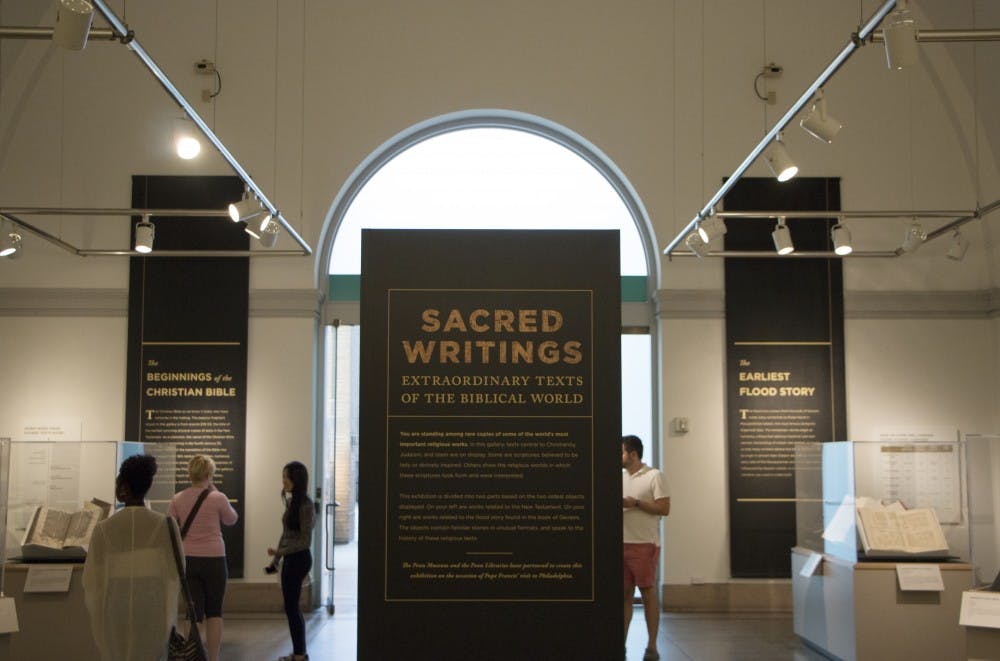
Penn Museum is displaying an exhibit in honor of the pope’s visit.
Over 1 million people will flock to Philadelphia to hear Pope Francis speak at masses or to possibly catch a glimpse of the pope himself. Along the way, they might want to check out the special pope exhibit at the University of Pennsylvania Museum of Archaeology and Anthropology.
Until Nov. 7, the Penn Museum is hosting a centerpiece exhibit to honor the pope’s visit. The exhibit, “Sacred Writings: Extraordinary Texts of the Biblical World,” boasts a display of the world’s rarest copies of significant religious works.
Divided into two parts, there is one section with works related to the New Testament and a fragment of the Gospel of Matthew on papyrus dating to the 3rd century C.E. Another section contains works related to the flood described in the book of Genesis and inscribed on a 1650 B.C.E. Mesopotamian clay tablet.
The Penn Museum and the Penn Libraries partnered to construct the exhibit.
“We wanted to put something together, and the museum really wanted to highlight these two pieces, which aren’t really on display that often,” Mitch Fraas, curator of Special Collections in the Kislak Center for Special Collections, Rare Books and Manuscripts at the Penn Libraries said. “But we wanted to tell a bigger story.”
The exhibit also features two folios from a richly decorated Quran from Iran, a 13th century illuminated Latin Bible produced in Arras, France, the first complete Bible printed in the Western Hemisphere in the Native American Massachusett language in 1663 and an 16th century Rabbinic Bible from Venice, Italy.
The curators wanted a story to tell through the exhibit. The ancient tablet in Sumerian cuneiform, containing the earliest version of the Mesopotamian flood story, anchors the displays.
The flood stories “are all slightly different from each other, but they’re all related,” Steve Tinney, associate curator-in-charge of the Babylonian Section in the Penn Museum said. “[We] wanted to tell each story going forward, so [we] looked for books. We wanted to highlight the different ways these two artifacts get taken forward in time.”
Lauren Heywood, a student at the Lutheran Theological Seminary in Philadelphia, visited the Penn Museum for the first time to see the display.
“I was definitely drawn here because of the religious significance of the exhibit,” she said.
The Daily Pennsylvanian is an independent, student-run newspaper. Please consider making a donation to support the coverage that shapes the University. Your generosity ensures a future of strong journalism at Penn.
DonatePlease note All comments are eligible for publication in The Daily Pennsylvanian.





